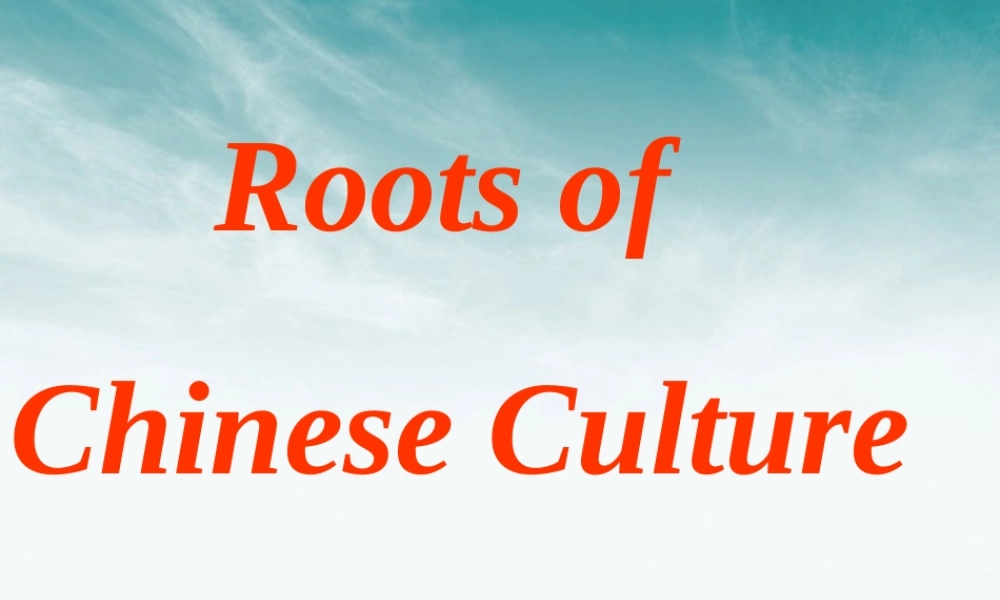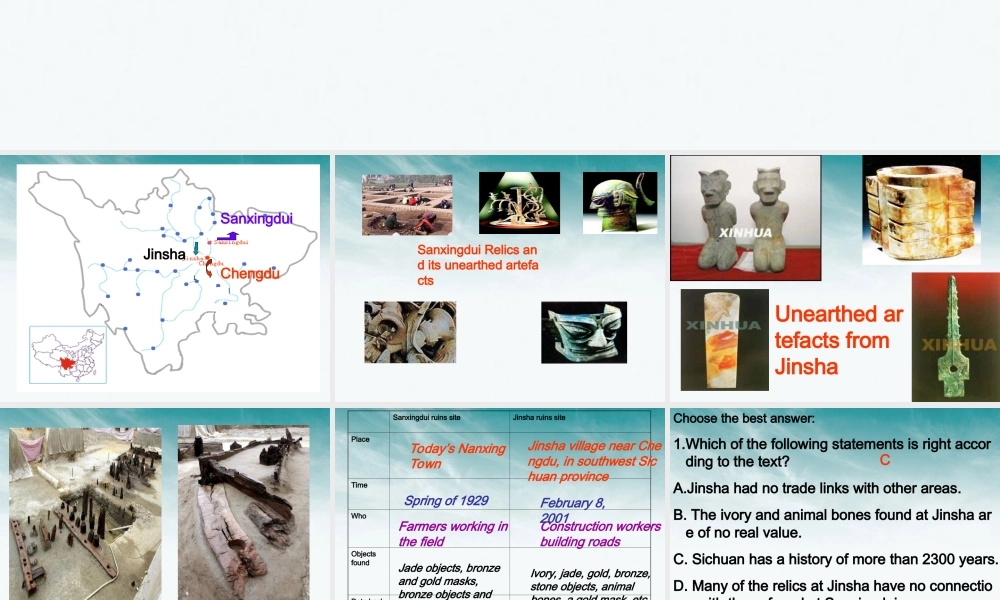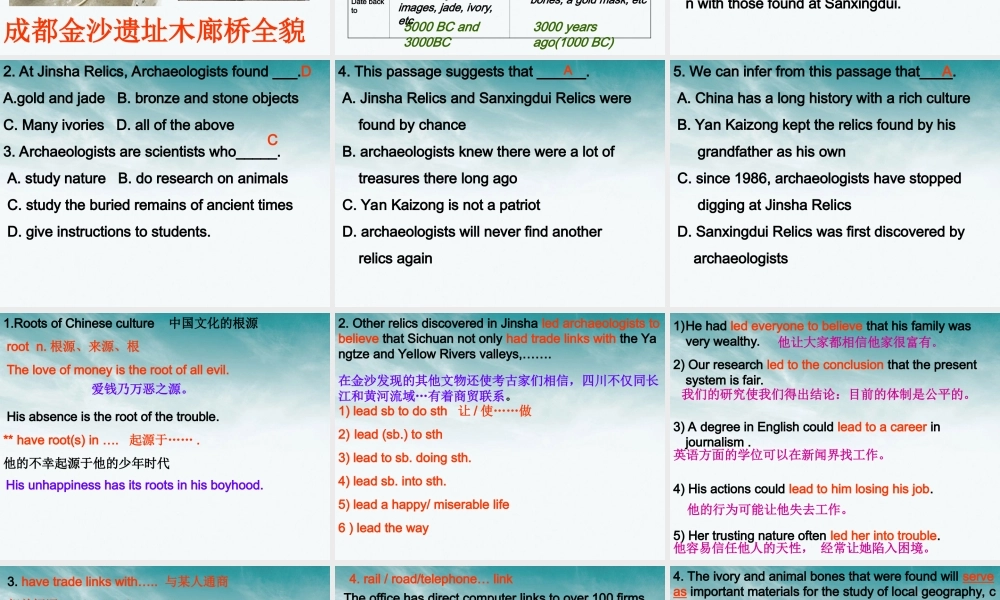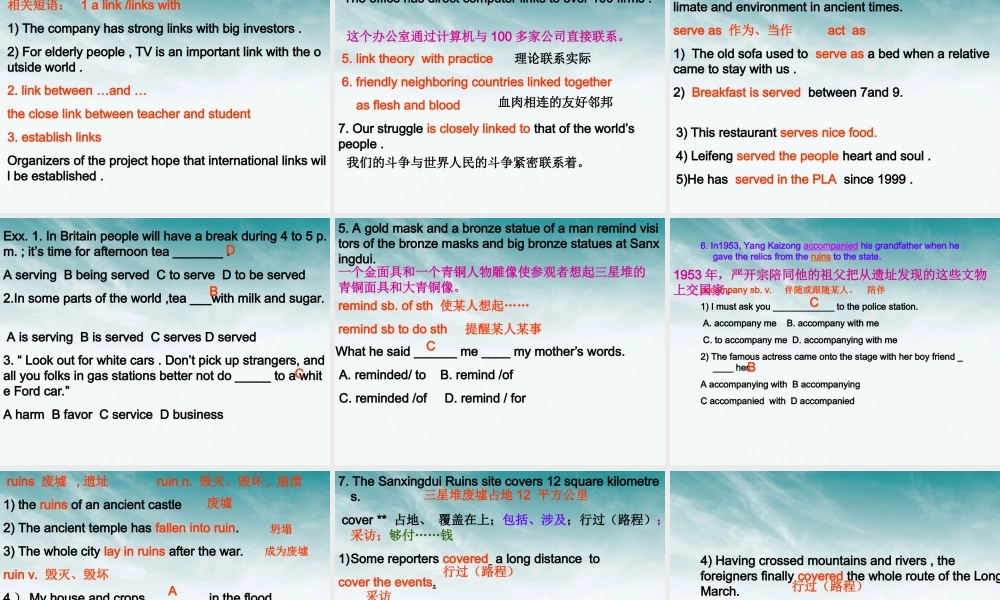Roots of Chinese CultureSanxingduiJinshaChengduSanxingdui Relics and its unearthed artefactsUnearthed artefacts from Jinsha成都金沙遗址木廊桥全貌Sanxingdui ruins siteJinsha ruins sitePlaceTimeWho Objects foundDate back to 5000 BC and 3000BCToday’s Nanxing Town Jinsha village near Chengdu, in southwest Sichuan province3000 years ago(1000 BC)Ivory, jade, gold, bronze, stone objects, animal bones, a gold mask, etcJade objects, bronze and gold masks, bronze objects and images, jade, ivory, etcConstruction workers building roadsFarmers working in the fieldFebruary 8, 2001Spring of 1929Choose the best answer:1.Which of the following statements is right according to the text?A.Jinsha had no trade links with other areas.B. The ivory and animal bones found at Jinsha are of no real value.C. Sichuan has a history of more than 2300 years.D. Many of the relics at Jinsha have no connection with those found at Sanxingdui.C2. At Jinsha Relics, Archaeologists found ___.A.gold and jade B. bronze and stone objectsC. Many ivories D. all of the above3. Archaeologists are scientists who_____. A. study nature B. do research on animals C. study the buried remains of ancient times D. give instructions to students.DC4. This passage suggests that ______. A. Jinsha Relics and Sanxingdui Relics were found by chance B. archaeologists knew there were a lot of treasures there long ago C. Yan Kaizong is not a patriot D. archaeologists will never find another relics againA5. We can infer from this passage that____. A. China has a long history with a rich culture B. Yan Kaizong kept the relics found by his grandfather as his own C. since 1986, archaeologists have stopped digging at Jinsha Relics D. Sanxingdui Relics was first discovered by ...




